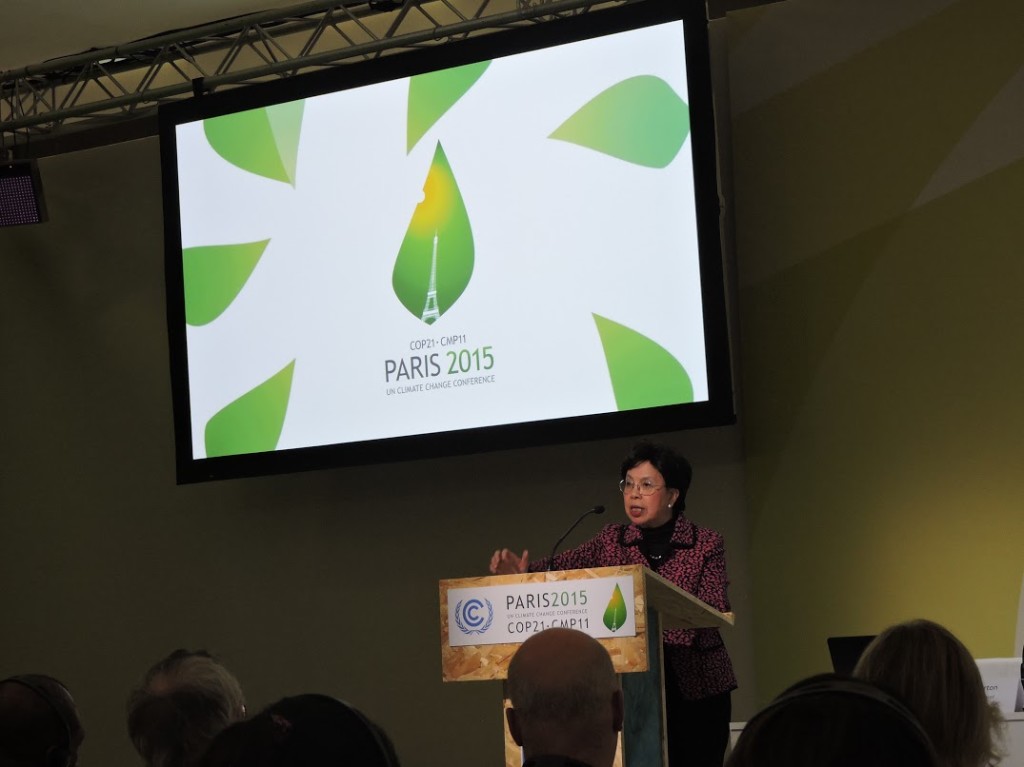Connecting Climate Change and Health in the Paris Agreement
 Between 30 November to 11 December 2015, 195 countries as well as thousands of international organizations, activist groups, and spectators gathered in Paris in order to discuss how the international community will address climate change. The UN conference culminated in the adoption of the Paris Agreement on 12 December 2015. This document legally obligates countries to limit the effects of climate change using a number of different agreed-upon Articles.
Between 30 November to 11 December 2015, 195 countries as well as thousands of international organizations, activist groups, and spectators gathered in Paris in order to discuss how the international community will address climate change. The UN conference culminated in the adoption of the Paris Agreement on 12 December 2015. This document legally obligates countries to limit the effects of climate change using a number of different agreed-upon Articles.
The central clause of the Paris Agreement is Article 2, which limits the climate change temperature increase to two degrees Celsius above pre-industrial levels and recognizes the need to only increase the temperature by 1.5 degrees. The agreed-upon strategies include the preservation of forests from degradation in Article 5, the mobilization of funds from developed to developing countries in order to facilitate compliance with the Paris Agreement in Article 9, and the creation of an international transparency framework in Article 13. The Paris Agreement officially comes into effect in 2020, though the Agreement includes certain clauses that guide how countries should prepare between 2016 and 2020.
The UN climate change conference was a landmark meeting not only because it created the most recent international agreement to limit climate change, but also because it included a number of international panels in the days leading up to the Agreement. These events addressed a number of key issues that many in the international community felt were not meaningfully included in other conferences. One of these issues was the relationship between climate change and health.
On 9 December 2015, the World Health Organization (WHO) lead a panel called “Why the Climate Change Agreement is Critical to Public Health.” Additionally, the Scientific Centre of Monaco, the Europe office of the WHO, and the Health and Environmental Alliance (HEAL) lead another panel called, “Health Central to Climate Change Action.”
The panels stressed that climate change deeply affects the environmental determinants of health, with speakers from both events stating how long-lasting temperature increases turned into a deadly heatwave that killed seventy thousand people in Europe in 2003. The panels also discussed heightened food and water insecurity due to droughts, increased weather disasters like tsunamis, and expanded territories for vector-borne diseases. These discussions emphasized the causal link between climate change and health outcomes.
Importantly, many mentioned the human right to health and its connection to environmental determinants of health, in turn establishing the normative link between health and climate change. For example, the Stockholm Declaration on the Human Environment in 1972 held that “[mankind] has a fundamental right to freedom, equality and adequate conditions of life, in an environment of a quality that permits a life of dignity and well-being.” This clause is closely connected to the International Covenant on Economic, Social, and Cultural Rights’ recognition of “the enjoyment of the highest attainable standard of physical and mental health” as a human right; ensuring the right to quality health will almost certainly require ensuring the right to a quality environment.
Both panels discussed different strategies to address climate change by incorporating environmentally-conscious frameworks into countries’ healthcare policies. Stana Bozovc, the State Secretary of the Ministry of Agriculture and Environmental Protection in Serbia, suggested the importance of intersectional coordination. For example, countries could integrate walking, cycling, and other healthy transportation alternatives to their urban planning initiatives. Margaret Chan, Director-General of the WHO, wanted countries to be more pro-active in preparing for health outcomes related to climate change, acknowledging that there will still be some negative side-effects due to climate change. She suggested the implementation of an early-warning system and the increase of sanitation and hygiene services in order to improve healthcare resilience to weather disasters.
The Paris Agreement recognized, at least in part, the importance of these panel discussions by international health leaders. The Agreement’s preamble acknowledges the intersection between climate change and human rights, including not only the human right to health but also the human rights afforded to Indigenous peoples, migrants, children, and women. However, while this clause urged countries to “respect, promote and consider their respective obligations,” countries are not legally bound to do so. Additionally, health was not mentioned at all in any of the twenty-nine Articles that legally comprised the international community’s joint response to climate change.
Although the Paris Agreement’s acknowledgement of the connection between climate change and health is a significant development in the global health community, more work needs to be done to create intersectional initiatives that improve both health and environmental outcomes. The two panels on climate change were, all things considered, not too influential in the drafting of the Agreement’s main Articles. However, the panels were likely instrumental for many different international health organizations in setting developmental agendas and in creating relationships for future joint projects. Only time will tell if these organizations can turn these informal agreements into effective and lasting change for the global community.
This article was published as part of the Osgoode chapter of Canadian Lawyers for International Human Rights (CLAIHR) media series, which aims to promote an awareness of international human rights issues.
